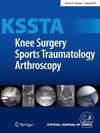Weight-bearing pain and implant migration, progressive radiolucencies, radiolucency more than 2 mm and subsidence on radiographs and CT are generally accepted criteria for knee arthroplasty loosening: An international Delphi consensus study
Abstract
Purpose
Establishing the diagnosis of loosening in total or unicondylar knee arthroplasty remains a challenge with different clinical and radiological signs evaluated in study designs with high risk of bias, where few or incomplete criteria are formulated for establishing the diagnosis of implant loosening. This study aimed at evaluating the variability between different clinical and radiological criteria and establish a consensus regarding clinical and radiological criteria for the diagnosis of knee arthroplasty loosening.
Methods
Highly specialized knee surgeons focusing on revision arthroplasty were invited to take part in an international panel for a Delphi consensus study. In the first round, the participants were asked to state their most important clinical and radiological criteria for implant loosening. In a second round, the panel's agreement with the collected criteria was rated on a 5-point Likert scale (1–5). High variability was defined by receiving at least one score each indicating complete disagreement and complete agreement. Consensus was established when over 70% of participants rated a criterion as ‘fully agree’ (5) or ‘mostly agree’ (4).
Results
High variability was observed in 56% of clinical criteria and 38% of radiological criteria. A consensus was reached on one clinical (weight-bearing pain [82%]) and four radiological criteria, that is, implant migration, progressive radiolucencies, subsidence and radiolucencies >2 mm on X-ray or computed tomography (CT) (84%–100%).
Conclusion
Amongst specialized knee revision surgeons, there is high variability in clinical and radiological criteria that are seen as important contributing factors to diagnosis of knee implant loosening. A consensus was reached on weight-bearing pain as clinical criterion and on implant migration, progressive radiolucencies, subsidence and radiolucencies of more than 2 mm on X-ray or CT as radiological criteria. The variability rates observed, along with the criteria that reached consensus, offer important insights for the standardization of diagnostic protocols.
Level of evidence
Level V.


 求助内容:
求助内容: 应助结果提醒方式:
应助结果提醒方式:


